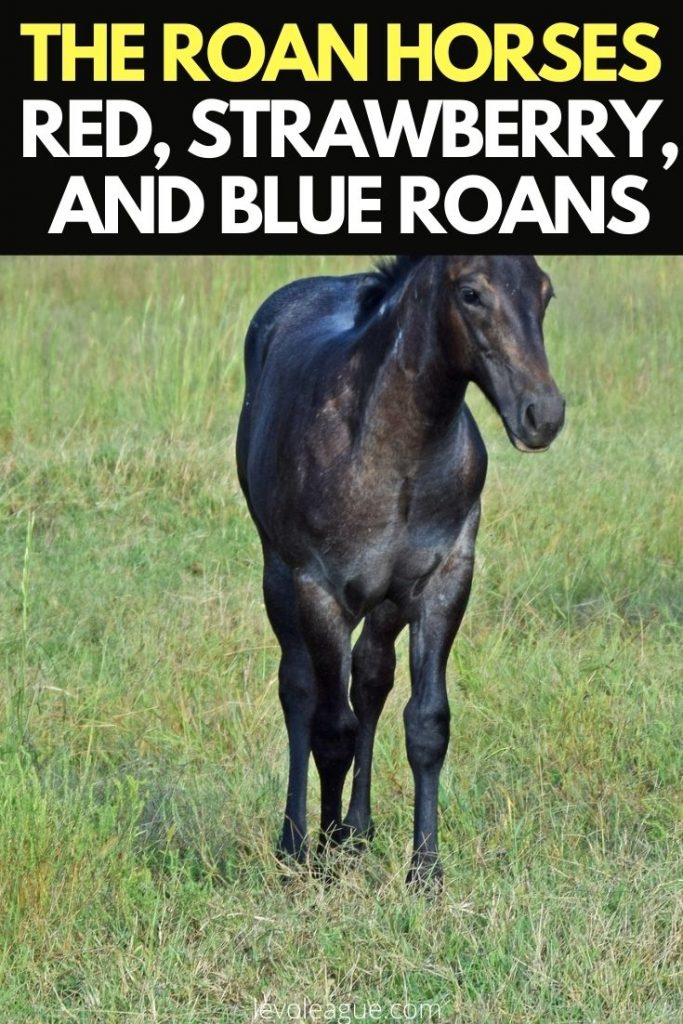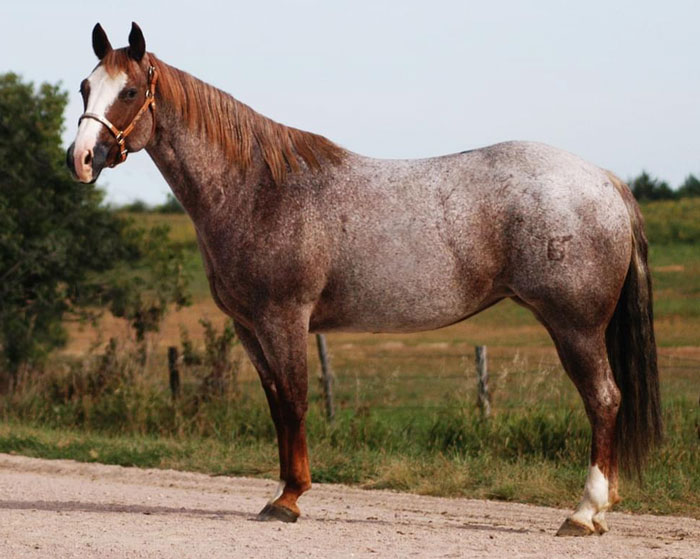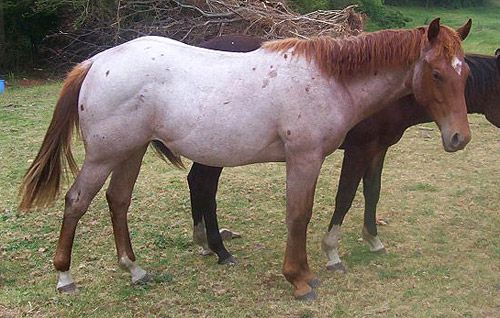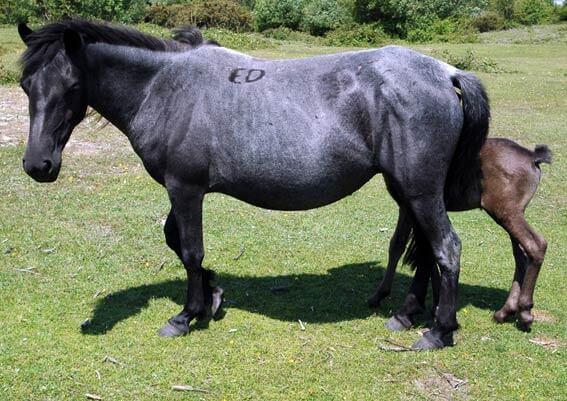The Roan Horses: Red, Strawberry, and Blue Roans
Roan horses have some very distinctive color characteristics that make them stand out among normal-colored horses.
Roans are often confused with gray horses, and gray horses are often called “roans.” The major difference is that gray horses become progressively lighter in color as they age, because more white hairs take the place of colored hairs with each shedding.
Roans are born with the same amount of white and colored hairs that they have in old age. The tell-tale signs of a roan coat color are a mix of both white and colored hairs all over the body, with solid color (no white mixed in) on the face and legs.
Roaning can occur over any normal body color, such as black, chestnut, bay, etc. There is a specific gene that codes for roaning, so roan can occur on any coat color, on any color pattern (Appaloosa, Paint), and in addition to gray. The most common roan colors are red roan, strawberry roan, and blue roan.

Red Roan Coat Color

“Red roan” is the name for a roaning over bay (brown body color with black legs, mane/tail, points).
To tell if a roan horse is a red roan, notice the color of the body hairs (they should be brown) and then check if there are black hairs present on the lower legs and in the mane and tail.
Sometimes a roan will have high white markings on his legs, so look around the knee area for black color.
Strawberry Roan Coat Color

“Strawberry roan” is the name for roaning over chestnut (any version of a brown color, from yellowish to reddish, all over the horse).If a roan horse has brown hairs mixed in with the white, check to see if any black hairs are present in the mane and tail, and on the lower legs. If no black is visible, then the color is a strawberry roan.
Blue Roan Coat Color

“Blue roan” is the name for roaning over black (black hairs are present all over the body, with no brown anywhere). Check areas such as the muzzle and flank for brown hairs – if brown is present, then the horse is not a blue roan, but instead has roan over some other color such as seal brown.
Other Roan Colors
Roan can be present over any normal horse color. If the horse is not a red, strawberry, or blue roan, then he can be described as a roan over his original color (i.e. palomino roan, roan on seal brown, roan on dun).
The Genetics of Roan Horses
The dominant Rn gene causes roaning. Because this gene is at its own locus (location), it can be present with any other color, and also with gray. Since both gray and roan have their own genes and gene locus, it is possible for a horse to be both gray and roan, along with another coat color such as black or chestnut.
A normal-colored chestnut horse will have the genotype rnrn, whereas a chestnut roan (strawberry roan) will have the genotype Rnrn or RnRn. Here is more information on the genetics of gray and white horses, and also the genetics of normal coat colors.
Roan with Other Coat Color Patterns
Roan can occur on both Appaloosa color patterns and Paint color patterns. The spotted horse will have areas of pure white, and his colored areas will display the roan color. The most confusing (but interesting-looking) horse would be the gray roan Appaloosa or Paint!






